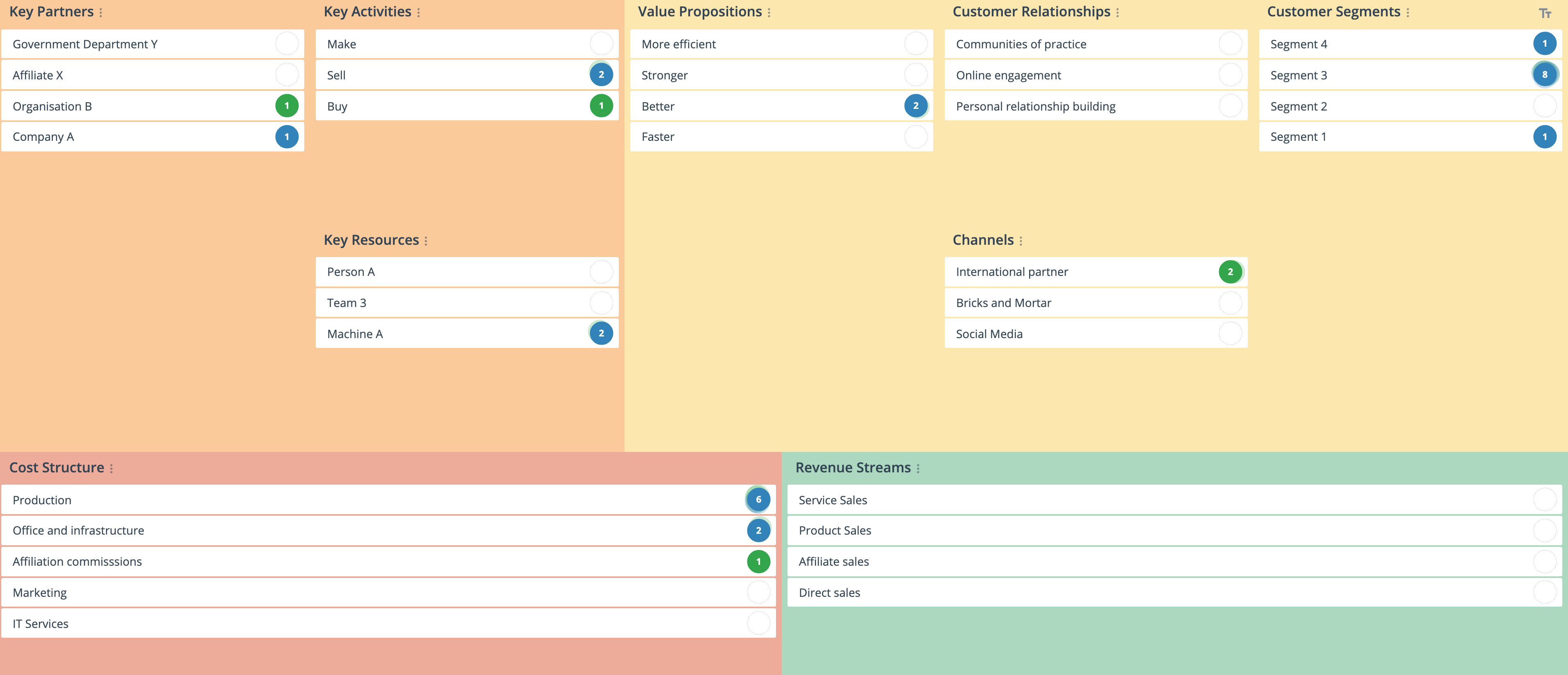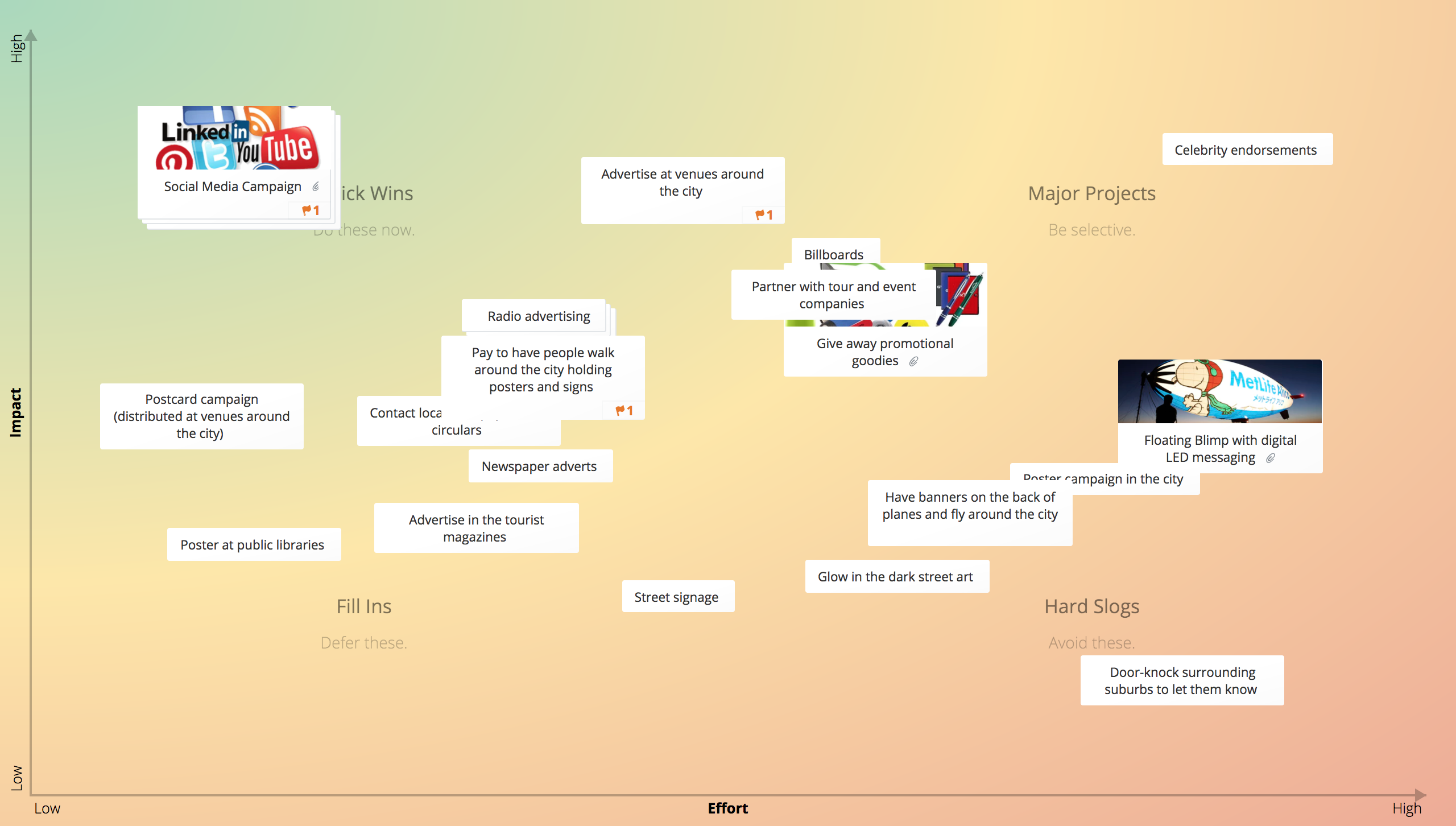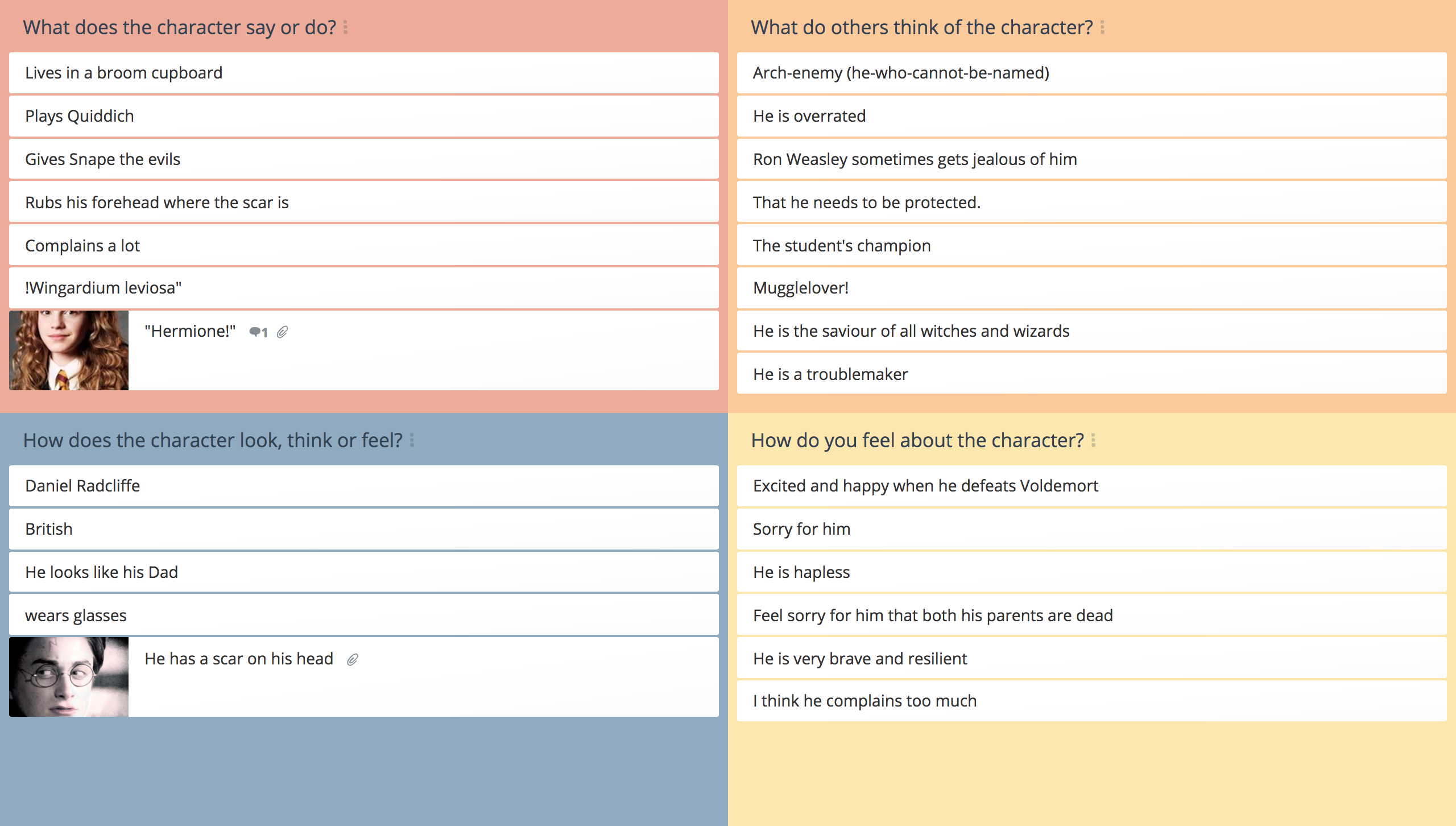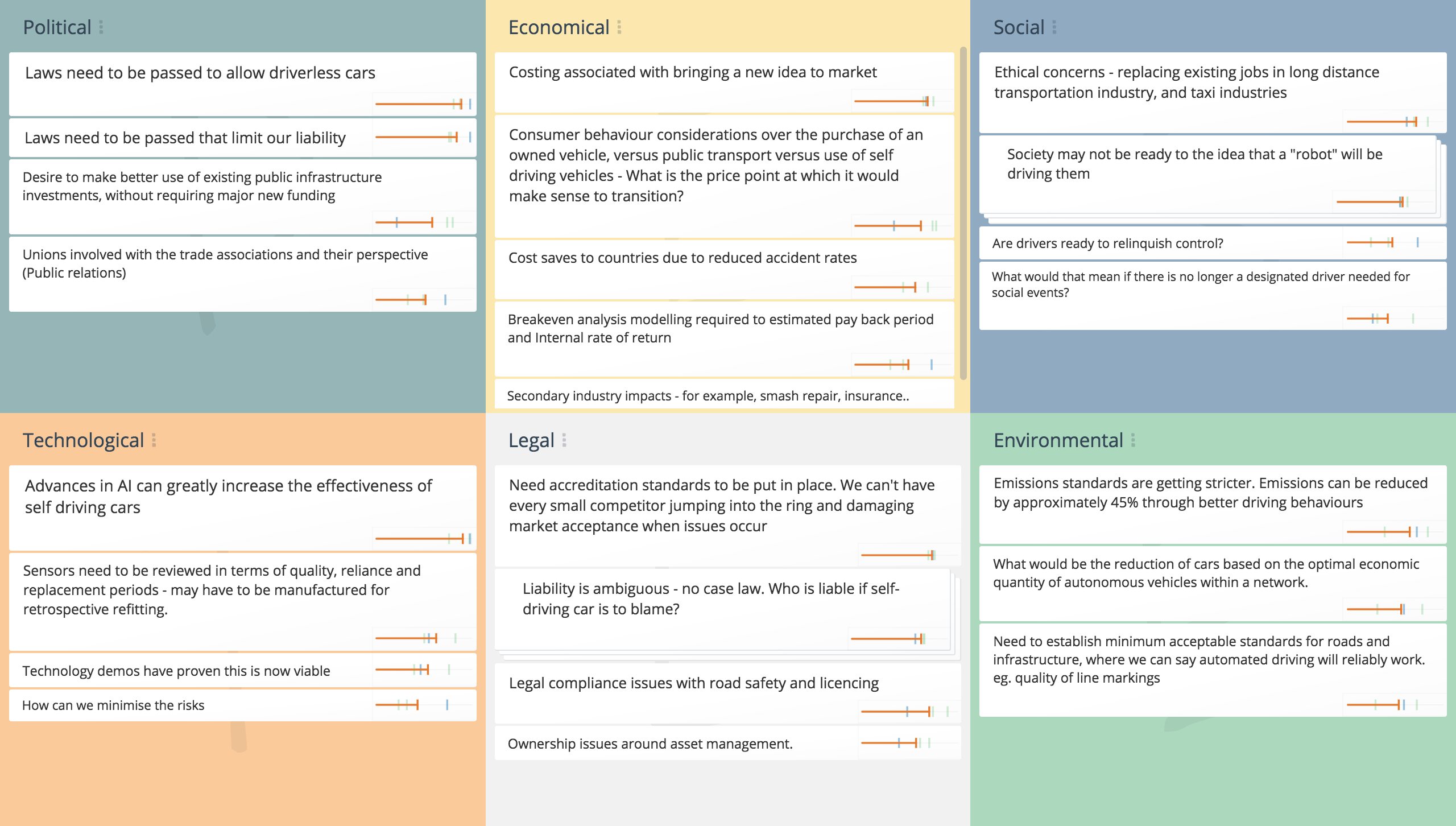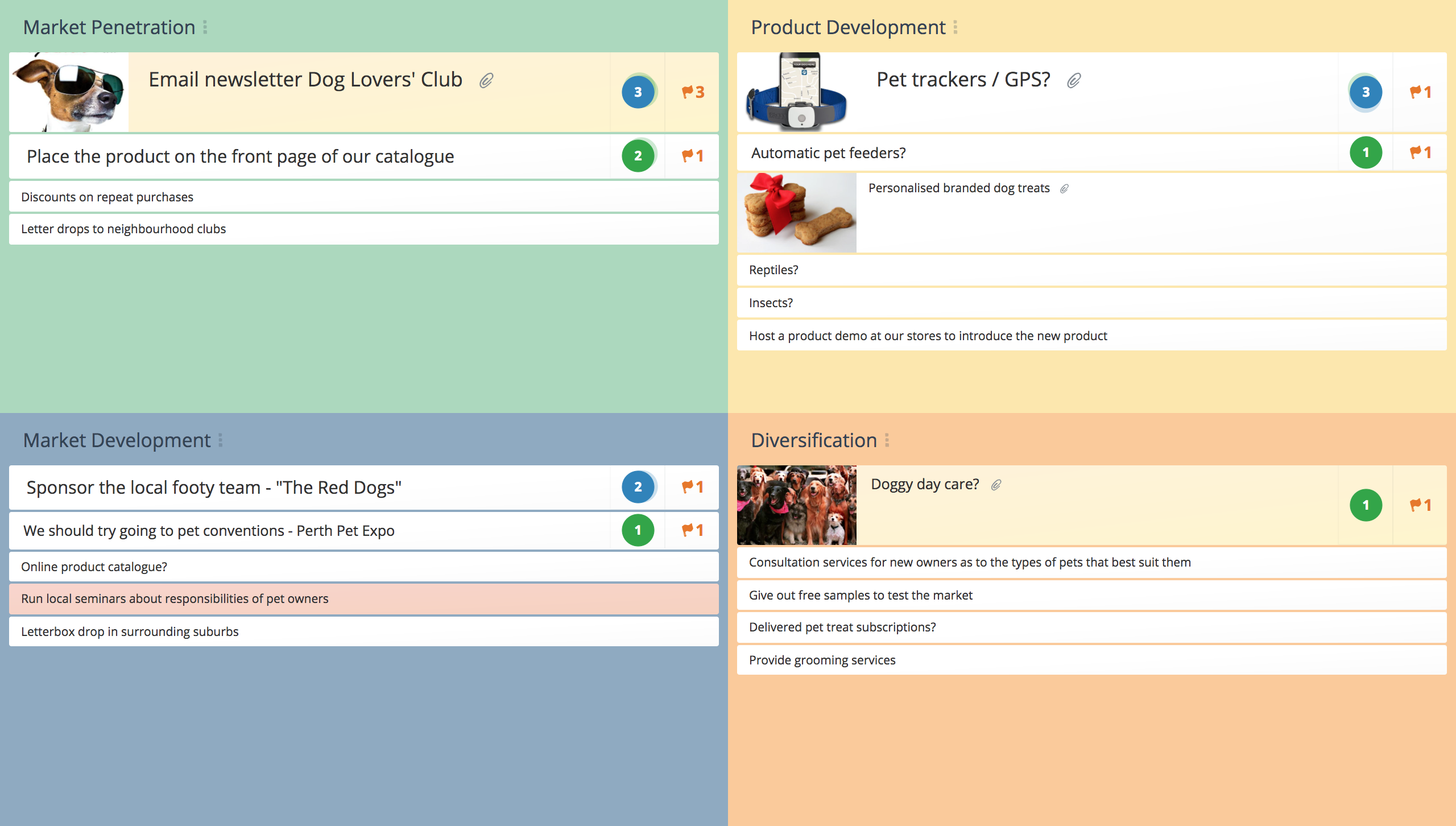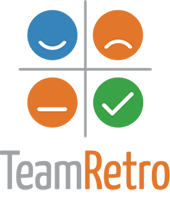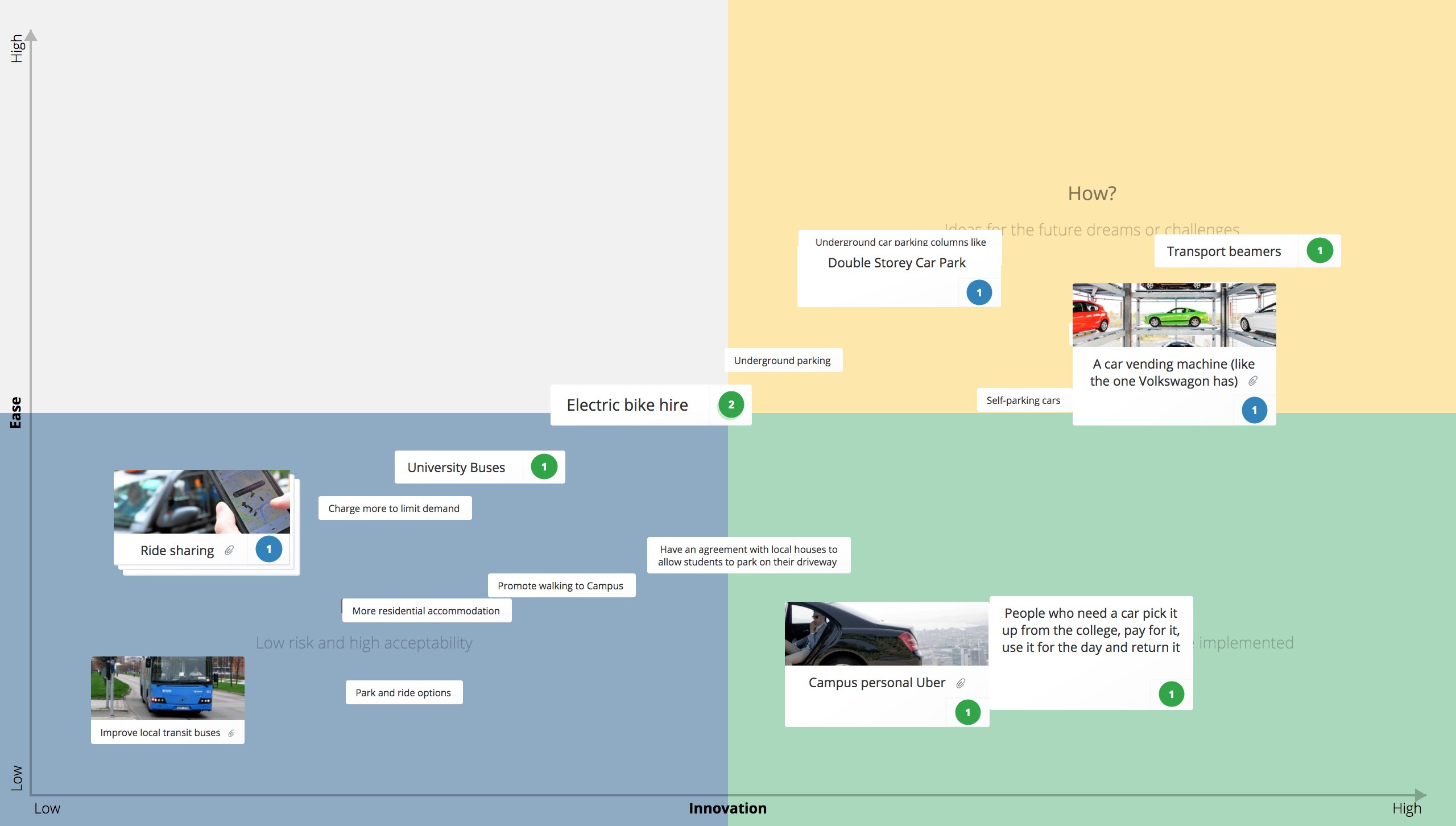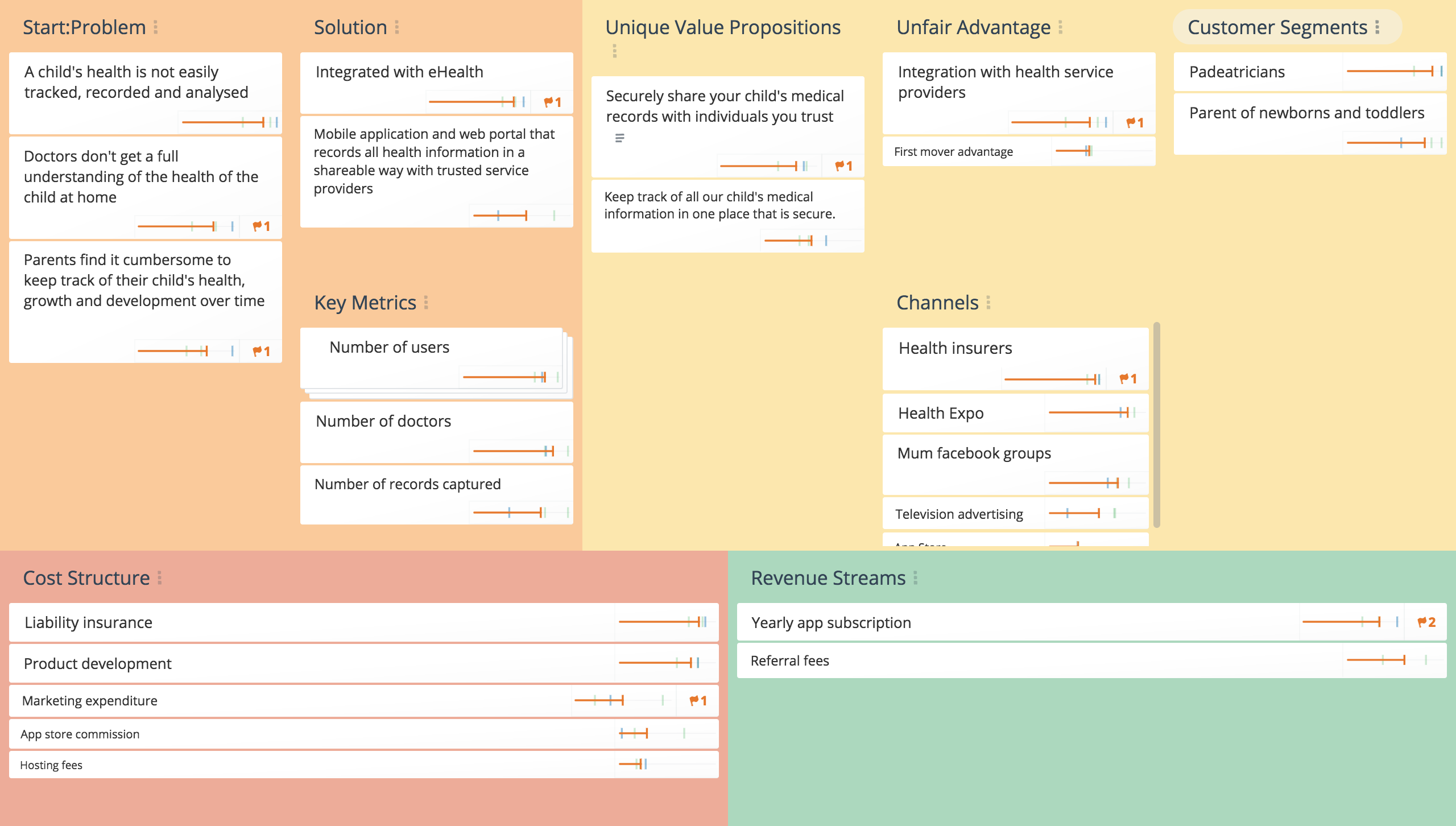The business model canvas is a organizational blueprint – documenting key aspects of new or existing businesses.
Continue readingImpact Effort Matrix
Discover the most important ideas and projects that will give you the most value out of your team’s efforts.
Continue readingCharacter Traits Analysis
What is Character Trait Map?
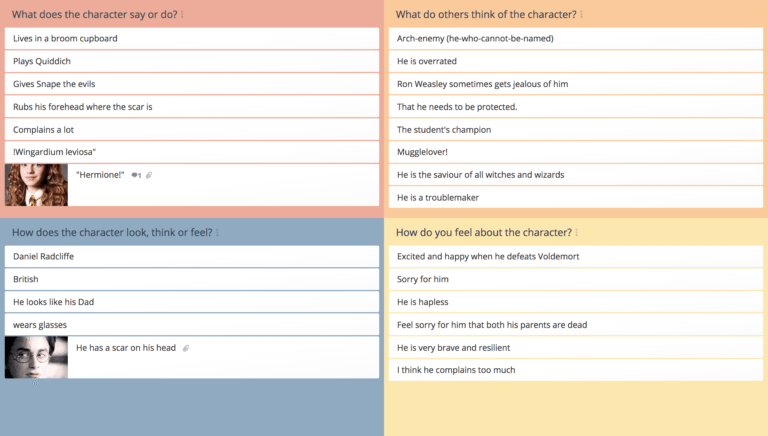
Easily Create a Character Map
Characters can be deeply unique and complex beings, in many ways similar to real life people. This template provides a way to flesh out and understand what drives a character. Does the character have any interesting mannerisms? Do others cower away or embrace the character?
By having guiding questions that help to prompt thinking and to allow people to independently or collaboratively brainstorm their ideas, this provides an in-depth analysis that gives everyone a broader understanding of the factors surrounding the character and their development.
How Do I Create a Lesson Plan with a Character Trait Analysis Map?
Use this simple guide in order to quickly create a character traits template that can be shared.
Step 1 – Select the Character Map template, and invite people in via email, Map ID or web link. Explain the purpose of the character trait map elements. Then read or view the text, film or play and start some initial discussion or provide an example.
Step 2 – Have each student brainstorm their ideas under each of the sections, adding pictures, videos, or any other materials that help to best describe the character.
Step 3 – Results will be combined real time. You can click on an idea to see who created it. You can then facilitate the discussion, clarify ideas, challenge assumptions and provide real time feedback.
Hint: Customize the map through the menu settings to choose the headings that best represent the nature of the literature being reviewed.
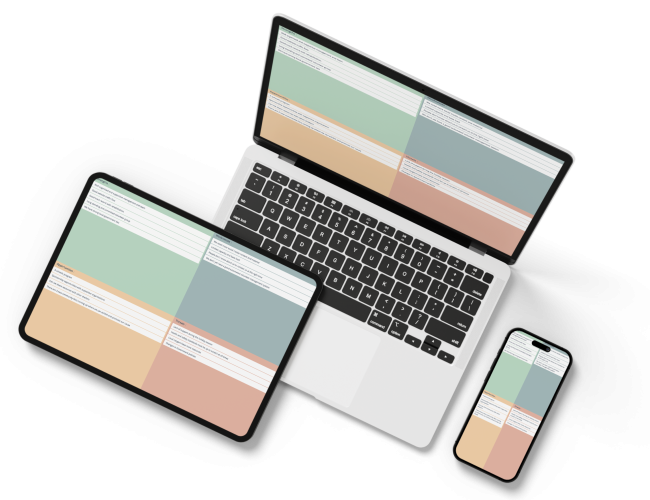
Save Effort, Time and Money with GroupMap
GroupMap offers more than just an online digital whiteboard—it’s innovative platform is designed to enhance the quality of your team’s decisions. With features that prevent bias and make facilitation seamless, GroupMap ensures no single voice dominates and ensures productive, inclusive conversations.
Its intuitive interface is easy for anyone to use, and its scalable design supports small teams and large groups whether they are face to face or around the globe. Customisable templates and workflows keep discussions focused on objectives, helping you drive actionable outcomes each and every time.
Create your first map and invite people in to start sharing their thoughts NOW.
Experience the power of GroupMap with our FREE 14 day trial.
Your free trial gives you access to all of our features, no credit card required.
PESTLE Analysis
Determine the level of impact that environmental factors have on your business or project.
Continue readingBCG Matrix
A BCG Matrix helps to better understand which product lines are bringing in profit, and which are weighing you down. The BGC matrix is the perfect tool for any product analysis.
Continue readingAnsoff Matrix
The Ansoff Matrix is a great tool for devising strategies for future growth of your product by considering the market and product direction.
Continue readingSOAR Analysis Template
What is SOAR Analysis?
SOAR analysis is a strategic planning technique which helps organizations focus on their current strengths and opportunities, and create a vision of future aspirations and the result they will bring.
In contrast to SWOT analysis, the SOAR model uses appreciative inquiry to focus the business on what is known to work, rather than internal weaknesses or perceived threats that might not eventuate.
The output from a SOAR analysis is a set of actions that leverage strengths and opportunities to strive for shared aspirations with measurable results. It provides a basis for further in-depth analysis using other business tools.
Why Do a SOAR Analysis?
SOAR analysis is a powerful tool to bring stakeholders together to recognize the potential of the organization and create a shared vision of the future.
Building on strengths requires less effort and resources than trying to correct weaknesses, as people find it more engaging and exciting to focus their attention on positives rather than negatives. It lends itself well to help individual team members develop their own development and career plans.
The technique is more action oriented than a SWOT analysis and is focussed on outcomes.
Who Can Use a SOAR Analysis?
A SOAR analysis is a good option for new, less developed organizations. It works for everyone, no matter what position or level they hold and can include both employees and external stakeholders. It applies to:
- All industries
- All levels of an organization
- Existing and new businesses
- Companies striving for breakthroughs rather than gradual improvement
- Individuals as part of their development plans
Use the SOAR model to:
- To explore new initiatives
- To develop a strategic plan and during annual strategy reviews
- To focus and redirect efforts and resources
- As part of a leadership development program
- To plan an individual’s career or develop their performance plan
Related Templates
- SWOT analysis
- TOWS analysis
- Business Model Canvas
Tips on Using the SOAR Analysis Template
- If you have already previously created a SWOT, then you can import the top Strengths and opportunities into this template to give everyone a starting point, refining as needed.
- Review the strategic advantage of the strengths and validity of the opportunities. Iterate and refine these as needed to ensure it is not just Business as Usual in nature.
- In creating Aspirations, the goal is to create an overall vision, exploring objectives (not metrics). This is about defining what the organisation may look and feel like, and what the definition of success is.
- Be specific rather than broad when defining ideas.
- Use quantitative data where possible to measure results, such as a Net Promoters Score, or % of spend.
- Celebrate and encourage all ideas and to recognize the contributors in the group who have participanted.
- Use the completed SOAR analysis template to communicate, share and gain buy in with key stakeholders.
SOAR Analysis Template & Example Questions
A SOAR analysis template is structured as a simple 2 x 2 matrix, resulting in four quadrants highlighting Strengths, Opportunities, Aspirations, and Results. This is a simple but effective strategic planning tool that identifies the strengths of your organisation and how these can be leverage against existing opportunities. You can define the aspirations and what you want to see in the future and what results you want to measure. The template below provides examples of questions that can be asked as you move everyone through the process.
GroupMap’s SOAR analysis template lets people brainstorm independently or collaboratively, prioritise the most important aspects and provides you with a process from ideation to execution. This can be done face to face in the same room with everyone, on remote online meetings through to global events – Example of SOAR Analysis (Global Conference)
Strengths
Example questions:
- What do we excel at?
- What are our greatest accomplishments?
- What are we most proud of?
- What makes us unique?
- What do we provide that is world class?
- What strengths are most valuable in our marketplace?
- What do we do or have that’s better than anyone else?
Aspirations
Example questions:
- What do we want to achieve in the future?
- What should our future business look like?
- How can we make a difference?
- What are we passionate about?
- What strategies and actions support our perfect future self?
Opportunities
Example questions:
- What partnerships would lead to greater success?
- What changes and trends in the market align with our strengths?
- What threats do we see that we could reframe as opportunities?
- What needs and wants are we currently not fulfilling for our internal and external stakeholders?
- Are there gaps in the market that we could fill?
Results
Example questions:
- What measures will tell us we are on track to achieve success?
- How do we translate our vision of success into tangible outcomes?
- How do we know when we’ve achieved our goals?
How to Complete a SOAR Analysis Effectively
To get the best possible outcomes from your SOAR analysis, choose participants with a broad range of perspectives. The group should consist of people from across different departments within your organization and could even include other stakeholders such as clients, suppliers, and partners.
If it’s difficult to get all participants in one place at the same time, screen sharing software and video conferencing allow facilitators to use traditional brainstorming tools like poster paper, whiteboards, and sticky notes. However, making sure everyone’s ideas are incorporated and transcribing, collating and prioritizing can be challenging. Online collaboration software such as GroupMap solves many of these problems and provides an efficient way to include, and consolidate all relevant information in real time.
You can also create separate SOAR Analysis for different smaller teams to allow them to create their own versions and perceptions to be shared with the larger group, then consolidate to get the whole group persepctive.

Objectives
Define a clear, one sentence objective for the SOAR analysis.

Brainstorm
Gather input and ideas

Collate
Clarify content, group similar ideas, and delete duplicates.

Prioritize
Vote and prioritize ideas according to impact on the organization.

Action Planning
Create an action plan assigning responsibility for each issue to a group or individual.

Share
Share outcomes, including the action plan with relevant stakeholders.
Begin by stating the purpose of the SOAR exercise and ensure everyone is clear on the scope. Clarify:
- What level of the organization the process will focus on – strategic, tactical, project, product/service, or personal level) and
- Over what timeframe – i.e., the next month, year, or a multi-year period
Exploring the current vision of the organization, present any relevant data, and define the challenge for the session. The results from previous analysis and plans can be introduced at this point. For example, PEST/PESTEL, Stakeholder analysis, Business Model Canvas, SWOT analysis, BCG matrix, Porter’s Five-Forces.
Example SOAR Objectives:
- Define strategic priorities for the next five years
- Create a product diversification roadmap for Europe over the next two years
- Create a professional development plan for the next 12 months
Ensure the group has a shared understanding of what the four quadrants mean and the questions that need answering.
Use break out groups to address each section of the SOAR Matrix. The size of the groups will depend on the objective of the session, whether everyone is in the same location, and their role or relationship with the organization. You might even choose to gather individual input. This step is an excellent opportunity to involve various stakeholders.
Don’t completely ignore threats and weaknesses even though they aren’t defined in the SOAR matrix. Instead, reframe them as a positive statement as a strength, opportunity, or aspiration.
Now you have all the ideas; it’s time to organize them. Cull any duplicates, merge similar themes, and discard any which aren’t within scope.
This step can be quite time-consuming, especially if the brainstorming step was done as individuals or in many smaller groups. An online collaboration tool like GroupMap, which automatically collates information and allows instant editing and reorganization of the information will significantly reduce the time required for this step and produce better outcomes.
Prioritize the information identified from the SOAR analysis by asking participants to vote on the most important issues for each quadrant. These are the factors you should address in your SOAR action plan.
Assign each person with one or more votes which they distribute across the issues they feel are most important. With multiple votes, they could use one per item or more than one if they feel something is critical.
The top 3-5 issues in each quadrant form the basis of the action plan. Ideally, strengths and opportunities will combine to achieve aspirations, and give results.
Decide on one or more actions for each priority. Assign responsibility to a group or individual and agree on time frames for completion.
Generate a report incorporating the findings of the SOAR analysis and action plan to distribute to relevant stakeholders. This report provides a means for monitoring progress and issuing regular updates. It’s important that those who gave up their time and effort to contribute to the analysis see tangible outcomes and improvement over time or they will be unwilling to participate in similar processes in the future.
The report also provides input for further analysis using other business tools and a starting point for future reviews.

Save Effort, Time and Money with GroupMap
GroupMap offers more than just an online digital whiteboard—it’s innovative platform is designed to enhance the quality of your team’s decisions. With features that prevent bias and make facilitation seamless, GroupMap ensures no single voice dominates and ensures productive, inclusive conversations.
Its intuitive interface is easy for anyone to use, and its scalable design supports small teams and large groups whether they are face to face or around the globe. Customisable templates and workflows keep discussions focused on objectives, helping you drive actionable outcomes each and every time.
Create your first map and invite people in to start sharing their thoughts NOW.
Experience the power of GroupMap with our FREE 14 day trial.
Your free trial gives you access to all of our features, no credit card required.
How Now Wow Matrix
The brainstorming process of a project is often where creative ideas form. The How Now Wow matrix allows your teams to organize thoughts, collaborate and prioritize the best ideas to take forward!
Continue readingLean Canvas
Cover the fundamentals of your business and raise your odds of success with the Lean Canvas Template.
Continue readingKWHLAQ
A KWHLAQ graphic organizer is a great visual tool for people to share what they know, think about what they want to research or learn, and then reflect on what they learned. This helps you create a student engaged learning experience. You can use the information collected to help you create tailored and student specific lesson plans whilst still linking it to your curriculum. This is especially useful for deep exploration of a new topic.
Continue reading